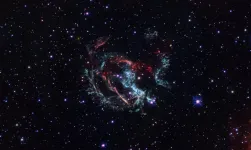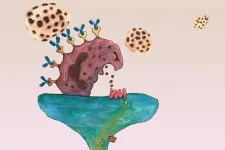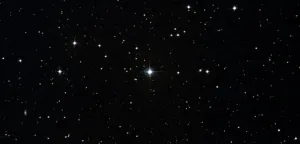Scientists uncover new path toward treating a rare but deadly neurologic condition
Complexes of proteins with molybdenum cofactor (Moco) can be taken up by Moco-deficient nematodes, suggesting that these complexes could treat human Moco deficiency, which is lethal
2021-01-15
(Press-News.org) BOSTON - Studies with a popular laboratory model, the nematode Caenorhabditis elegans, have revealed a possible therapeutic avenue for a rare but deadly condition in which children are born without the ability to make molybdenum cofactor (Moco) on their own.
Though little known, Moco is essential for life and so far it has proven extremely difficult to stably isolate this compound in the laboratory, preventing its use as a therapeutic supplement. This new work, which appears in Genes & Development, reveals that nematodes genetically engineered to be Moco-deficient can take up Moco that is attached to several types of proteins. This suggests that such protein-Moco complexes could be used as a treatment for Moco deficiency in people.
Children born with mutations that make them unable to synthesize Moco suffer lethal neurological and developmental defects. Providing them supplemental Moco might reverse these devastating symptoms. This work suggests a potential new route for delivering this essential cofactor.
The researchers carried out studies in C. elegans that were engineered to be deficient in their ability to make Moco. Like humans, C. elegans deficient in Moco die very early in development. Nematodes, however, can also ingest Moco from their diet - a process that is similar to supplementation, as with vitamins. The researchers found that the worms could take in Moco as a range of purified Moco-protein complexes. These included complexes with proteins from bacteria, bread mold, green algae and cow's milk. Ingesting these complexes saved the Moco-deficient worms.
Further, they demonstrated that the Moco-protein complexes were very stable, suggesting it is possible to produce them as a supplement for children born with Moco deficiency.
"We tested four proteins and all four were restorative in our nematode model. That's very encouraging," says Kurt Warnhoff, PhD, an investigator in the Department of Molecular Biology at Massachusetts General Hospital (MGH) and the paper's co-lead author. "We do not want to overstate our findings, especially as they relate to patients, but we are extremely excited about the therapeutic and fundamental implications of this work."
INFORMATION:
The work was led by Gary Ruvkun, PhD, and Ralf R. Mendel, PhD. Ruvkun is at the Department of Molecular Biology at MGH and the Department of Genetics at Harvard Medical School. Mendel, a pioneer in Moco research, is at the Braunschweig University of Technology in Germany. Co-lead author Thomas W. Hercher is a member of Mendel's lab.
The work was supported by the National Institutes of Health, the German Research Foundation and a Damon Runyon Fellowship.
About the Massachusetts General Hospital
Massachusetts General Hospital, founded in 1811, is the original and largest teaching hospital of Harvard Medical School. The Mass General Research Institute conducts the largest hospital-based research program in the nation, with annual research operations of more than $1 billion and comprises more than 9,500 researchers working across more than 30 institutes, centers and departments. In August 2020, Mass General was named #6 in the U.S. News & World Report list of "America's Best Hospitals."
ELSE PRESS RELEASES FROM THIS DATE:
2021-01-15
In a normal year, biologists Daniel Janzen and Winnie Hallwachs spend about six months in Costa Rica, where they conduct research and pursue conservation efforts in Área de Conservación Guanacaste (ACG), a World Heritage Site in the northwest that encompasses, a network of parks and preserves they helped establish in the 1980s and that has grown to more than 400,000 acres, including marine, dry forest, cloud forest, and rain forest environments.
In 2020 that is where the married couple was when the COVID-19 pandemic took hold of the world, and compelled them to extend their stay in the virus-free forest until the fall, when they felt safe enough to travel back to their other home in Philadelphia.
"With modern laptops and internet, we could watch the world go ...
2021-01-15
Anthropologist Caleb Everett and former student Sihan Chen used a novel data analysis of thousands of languages, in addition to studying a unique subset of celebrities, to reveal how a soft food diet--contrasted with the diet of hunter-gatherers--is restructuring dentition and changing how people speak.
Their findings, published in Scientific Reports, counter the longstanding belief within the field that maintains that languages are susceptible to the same pressures and so are essentially immune to external factors.
"Our results represent the most compelling evidence to date that languages are very much affected by external ...
2021-01-15
When the Thomas Fire raged through Ventura and Santa Barbara counties in December 2017, Danielle Touma, at the time an earth science researcher at Stanford, was stunned by its severity. Burning for more than a month and scorching 440 square miles, the fire was then considered the worst in California's history.
Six months later the Mendocino Complex Fire upended that record and took out 717 square miles over three months. Record-setting California wildfires have since been the norm, with five of the top 10 occurring in 2020 alone.
The disturbing trend sparked some questions for Touma, who is now a postdoctoral researcher at UC Santa Barbara's Bren School for Environmental ...
2021-01-15
DARIEN, IL - Editors of the Journal of Clinical Sleep Medicine have identified some of the most significant articles in the publication's history, publishing new commentaries on them in a special 15th anniversary collection. The 15 commentaries from associate editors and members of the journal's editorial board describe the impact of the selected articles both at the time of their publication and today.
"The collection highlights some of the most influential publications in clinical sleep research over the past 15 years," JCSM Editor-in-Chief Dr. Nany Collop said. "These studies underscore the remarkable ...
2021-01-14
By feeding arctic ground squirrels special diets, researchers have found that omega-3 fatty acids, common in flax seed and fish oil, help keep the animals warmer in deep hibernation.
A University of Alaska Fairbanks-led study fed ground squirrels either a diet high in omega-3s or a normal laboratory diet, and measured how the animals hibernated afterward. Researchers found that the omega-3 diet helped the animals hibernate a little warmer than normal without negatively affecting hibernation. The omega-3 diets also increased the amount of a heat-producing fat, called brown adipose tissue, the animals pack on.
The discovery could add more understanding ...
2021-01-14
DURHAM, N.H.-- Waldenström macroglobulinemia (WM), a rare form of lymphoma, does not have any known cure and only one FDA-approved treatment making it challenging to treat patients. Researchers at the University of New Hampshire took the novel approach of targeting specific cell proteins that control DNA information using inhibitors, or drugs, that were effective in reducing the growth of the cancer cells and when combined with a third drug were even more successful in killing the WM cancer cells which could lead to more treatment options.
"This is the first study to report the promising results ...
2021-01-14
Astronomers are winding back the clock on the expanding remains of a nearby, exploded star. By using NASA's Hubble Space Telescope, they retraced the speedy shrapnel from the blast to calculate a more accurate estimate of the location and time of the stellar detonation.
The victim is a star that exploded long ago in the Small Magellanic Cloud, a satellite galaxy to our Milky Way. The doomed star left behind an expanding, gaseous corpse, a supernova remnant named 1E 0102.2-7219, which NASA's Einstein Observatory first discovered in X-rays. Like detectives, researchers sifted through archival images taken by Hubble, analyzing visible-light observations made 10 years apart.
The research team, led by John Banovetz and Danny Milisavljevic ...
2021-01-14
In addition to a skin rash, many eczema sufferers also experience chronic itching, but sometimes that itching can become torturous. Worse, antihistamines -- the standard treatment for itching and allergy -- often don't help.
New research from Washington University School of Medicine in St. Louis indicates that allergens in the environment often are to blame for episodes of acute itch in eczema patients, and that the itching often doesn't respond to antihistamines because the itch signals are being carried to the brain along a previously unrecognized pathway that current drugs don't target.
The new findings, published ...
2021-01-14
The sun is the only star in our system. But many of the points of light in our night sky are not as lonely. By some estimates, more than three-quarters of all stars exist as binaries -- with one companion -- or in even more complex relationships. Stars in close quarters can have dramatic impacts on their neighbors. They can strip material from one another, merge or twist each other's movements through the cosmos.
And sometimes those changes unfold over the course of a few generations.
That is what a team of astronomers from the University of Washington, Western Washington University and the University ...
2021-01-14
There's a 7-fold unexplained variation in rates of euthanasia across The Netherlands, reveals an analysis of health insurance claims data, published online in the journal BMJ Supportive & Palliative Care.
It's not clear if these differences relate to underuse, overuse, or even misuse, say the researchers.
The Netherlands was the first country in the world to legalise euthanasia and physician-assisted suicide, introducing preliminary legislation in 1994, followed by a fully fledged law in 2002. The practice has been tolerated, however, since 1985.
Official data show that the number of euthanasia cases has risen more or less continuously since 2006, reaching 6361 in 2019. These cases ...
LAST 30 PRESS RELEASES:
[Press-News.org] Scientists uncover new path toward treating a rare but deadly neurologic condition
Complexes of proteins with molybdenum cofactor (Moco) can be taken up by Moco-deficient nematodes, suggesting that these complexes could treat human Moco deficiency, which is lethal



